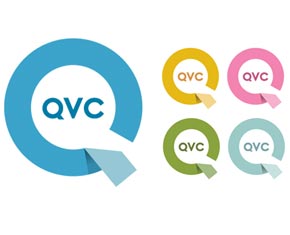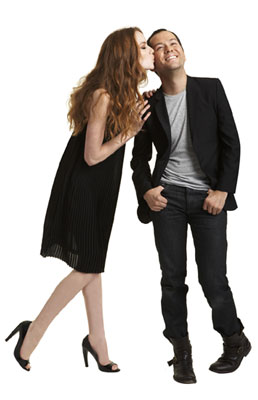 0
0 Los Angeles designers such as Rachel Pally, Cynthia Vincent, Karen Zambos and Geren Lockhart have all announced they’re partnering with QVC to offer affordable fashion options for their Spring 2012 collections. The effort to reach a wider audience and appeal  to more budget savvy fashionistas is right in line with QVC’s mission statement, which is to provide quality products at a great value with little hassle for the buyer.
to more budget savvy fashionistas is right in line with QVC’s mission statement, which is to provide quality products at a great value with little hassle for the buyer.
Because QVC sells internationally, this new partnership also makes the designers’ products available to a global audience instead of a local or national one. Their garments will also come with lower price tags, a plus for the many women who want to stay on trend without dealing with post splurge guilt.
Other well known designers already sell with QVC, including Marc Bouwer, Jacqueline Kennedy and Rachel Zoe.
By Mirela Gluck
Posted by Mirela Gluck at 11:09 AM
bargain news |
Brooks Ross knows cashmere. The Leggiadro President tells us what makes cashmere the best in the world...or pretty close.
 1
1 Brooks Ross knows cashmere, as he should. His mother, Ann Ross, founded Madison Avenue’s upscale destination for women’s fashion, Leggiadro, in 1985 and now has boutiques in New York, Americana Manhasset, Melrose Place, Ocean Reef Club, Monticeto, Palm Beach, Nantucket, Palm Desert, Naples, Sarasota, Dallas and Charleston. Sticking with the foundations of luxury, Leggiadro designers and craftsman all Leggiadro clothing is spun and died in Italian factories. And their pillow soft cashmere is the best in the world…or pretty darn close.
What’s so great about cashmere?
Everybody loves cashmere – the texture, the warmth, the luxury. Have you felt it?
I mean it’s beautiful, but why is good-quality cashmere so expensive?
There is a lot of fundamental differences between types of cashmere. Five things to keep in mind are: length of fiber, location of raw fiber, color of raw fiber, location of production and weight of item.
So it’s like pima cotton – longer fibers make it softer?
Exactly. Longer fibers create greater strength Think of it like interlocking hands with a person. If you are holding each other by your fingertips, it won’t take a lot of force to break that bond. If your hands are fully clasped, it will take more force to separate. Shorter fibers have a tendency to pill.
Then where the fiber comes from is important as well. But isn’t a goat a goat?
There are Kashmir are in many countries; it’s where on the goat the fibers come from. Premium fibers come from a very small area in the center of its chest, the underbelly, and are hidden underneath a coarser outerlayer of hair called “guard hair.” The hair that comes from there is also the purest in color. Other parts of the animal might have fibers gray or brown. Those are harder to die.
Why Italy?
Italians have ingrained, historical knowledge of how to deal with the fiber. Leggiadro spins their fabrics in Italy because of their ingrained luxury tradition of both spinning and dying the yarns.
What was the fifth one?
Weight. So it might seem counterintuitive, but the lighter the material, the more delicate and luxury. A very fine sweater requires almost three times as much time to make the same sweater at a heavier weight. Our artisans are more careful about small imperfections. A broken needle or small twist can entirely ruin the quality and weave. They must be extremely meticulous.
Hence the name Leggiadro.
Right. Leggiadro means aesthetic beauty with lightness and grace.

Emma Dinzebach
Posted by Emma Dinzebach at 12:00 AM
bargain news , Designers , People , Retail Scoop , STYLE/BEAUTY , TSC Interviews |
The Mexican dress designer who finds inspiration in his homeland.
 0
0 Rolando Santana knows dresses. He grew up surrounded by fabric (his mother was a dressmaker) and moved to New York City in 1991 to fulfill his fashion industry dream. After twenty years in the fashion capital of the world, Santana still finds inspiration for both color and structure in his homeland.
Do you have a theme in mind when you start a new collection?
Yes. So for Spring 2011, it’s Modern Mexican Architecture. Then finding pieces that help me translate that onto a dress, whether it’s a color story or structure. For instance, we have one print that looks like cement. It’s very textured and printed on linen fabric. So seeing a cement wall and translating it onto a dress.
What inspired Modern Mexican Architecture?
My first collection launched in the height of the recession, so I really wanted my next collection to be bright, vibrant and inspiring. Being from Mexico, there are always such bright colors: yellows, reds, stripes. Previously, we played a lot with fabrics and draping. People reacted really well to it but were also inspired by the more sophisticated pieces – the blacks, neutrals, pieces that were classic but with a modern twist. 
For 2011, I sought to combine those two elements. There is an architect named Luis Barragan, and he uses bright colors but his architecture is incredibly simple. I liked the combination. The main concept of the line is simple shapes with a lot of play on fabrics – pleating, draping, sequins, but sequins used for texture. Not bling all over.
Your first job when you graduated from FIT was for Spenser Jeremy. I read they “recognized your talent.” How so?
Since it was a small family-owned company, I was exposed to the business end – production, merchandising, working with the design team. They had a private label and never a designer who really catered to the account. They wanted me to design a few dresses, and I made a presentation. I was assigned to the account. It was my first design job, and it opened the door creatively for me.
Why dresses?
Dresses are the ultimate feminine expression. The ability to create something special that is very easy to wear. With a dress, it’s just one piece. After so many years in the fashion world, you see pieces come and go, but the dress always remains. If a woman has a choice to buy separates or a dress, a dress is the way they will go. For everything.
Do you have a fashion design who inspires you?
Not a big name designer like Dior, but I’m inspired my contemporaries. More so by just traveling, people watching. Last weekend I was walking on the beach and started picking up stones. I was inspired by the sand, neutral colors. I started sketching some designs then in the studio, see if the fabrics works for them.
So if you could travel anywhere, where would it be?
Somewhere in Mexico. I would like to find a city that brings inspiration for fall. A city I haven’t been to where I could look at textiles and fabrics. Being remote from everything. I wouldn’t choose a glamorous spot, but rather explore within my roots and translate that into a more universal, cosmopolitan taste.
Santana and I spoke a bit about on the need to be remote and alone to find inspiration and work out designs. Creating space to be inspired is even harder for a designer launching their own line, their own business. Santana continually works to achieve this balance. When he left his studio last night, he sent me an email thanking me for my time. It was almost midnight.
To sample Rolando Santana’s dresses, visit his sale this week.
Emma Dinzebach
Posted by Emma Dinzebach at 12:00 AM
Designers , Fashion News , Fashion News , Insights , Other People's Style , People , STYLE/BEAUTY , The City , TRENDS , TSC Interviews |
 0
0 
Earlier this week two Chinese criminal offenders were convicted of conspiracy to traffic counterfeit wallets, purses, handbags, and carry on luggage items. One of the biggest case in counterfeit goods in U.S. history, reportedly Chong Lam and Siu Yung Chan and others ran an complex international counterfeit ring including manufacturing, import, wholesale, and distribution of counterfeit Louis Vuitton, Burberry, Coach, Fendi, Chanel and Gucci products valued at a corresponding price of $100 million dollars.
What concerned us more than the actual suppliers of counterfeit goods was the demand. Consumers who create counterfeit demands are hurting designers, the industry, the city, and society in several ways.
Counterfeit bags are not a “bargain.” Sample sales, online sales and trunk shows are opportunities for the middle-class to experience beautifully crafted product for a “bargain.” When you purchase a designer product you know exactly where your money is going. (Leather, production, advertising, creation, distribution, etc.) Counterfeit bags lack craftsmanship, detail and quality; and when you purchase a counterfeit item, the cash money goes to drug cartels, child labor, and the perpetuation of dishonesty and disregard. Their eco-ignorant methods of production and transport hurt people, animals and our planet. People who sell counterfeit goods are neither tax payers nor contributing members of society. Conversely, people who purchase counterfeit goods are neither tax payers nor contributing members of society.
So you can’t pop down to Chinatown on your lunch break to find it, but when you do discover the piece you love (and can afford) the feeling with be forever worth it. Your style is a representation of you. How do you present yourself to others? Are you a cheap, faux leather bag with upside-down LVs? Or are you something worth treasuring?
Emma Dinzebach
Posted by Emma Dinzebach at 12:00 AM
bargain news , Designers |
